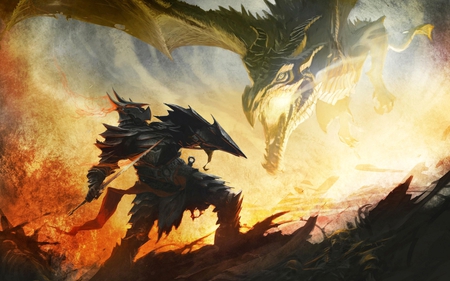This is a guest post by Brent King.
Deeper than our deepest longings, fairy tales tell truths about our inner and outer world, truths that are either too obvious for modern men or too truthful. Take, for instance, Little Red Riding Hood. It affirms that the world is dangerous, that there is an evil wolf that will eat us up if given the chance. Yet there is also a huntsman who can slay the wolf and save us. The great themes of sin and redemption are encapsulated in such a story in a clever and deeply symbolic way.
It’s All About the Good News
GK Chesterton said that the deepest truth about fairy tales was not that dragons exist, but that they can be beaten. Who doesn’t see the bad news about dragons? They lurk all around us in our broken world. It’s the good news of their defeat that we need to hear.
The Pagans Knew More!
Many of our modern tales do not reflect this reality. In these stories, the young girl easily defeats the wolf or the protagonist befriends the dragon and they live happily together ever after. Consequently, our children are assured that wolves and dragons can be effortlessly vanquished. The pagans of old knew more about the dragons than we do!
It Seems Impossible
The good news in those ancient stories is that, beyond all hope, the dragon has been defeated. They are stories that seem impossible. We have all seen the pictures of the hideous monster dwarfing the brave knight wielding a sword. How can that story ever have a happy ending?
Yet it is this hope that lies at the root of our fascination with fairy stories: that good will triumph against all odds. The eucatastrophe, as Tolkien called it, of the fairy tale represents the heart of the Gospel: the dragon has been destroyed. The princess has been rescued, and she will live happily ever after with the prince.
A Primal Story
Fairy tales hold power over the human heart because they reflect the Gospel story, a story that rejects the idea of the princess saving herself. Of course, this is the primal story. It tells of a God who made the world and man. It tells of a malevolent angel’s attack, and man’s defeat and captivity. It was a rout so complete that, to save men, God had to become a man and fight the enemy Himself.
That is What Happened, but We Tell the Story Like This:
Once upon a time there was a lovely damsel who fell in love with a prince. Through her own folly, she was captured by a necromancer, drugged, and confined in his dark tower. The prince disguised himself as a commoner and entered into his shadow-shrouded stronghold to rescue her. But the sorcerer was too strong and slew the prince. Yet he could not combat the ancient magic that brought the prince back to life. The prince subdued the sorcerer and his minions, rescued the princess, and took her back to his kingdom where they lived happily ever after.
An Enduring Story
We tell and retell this story, as if we can’t get enough. Somewhere deep inside, we all know it is true. It awakens our imagination, rousing us in a way that religion cannot. No one, anywhere in this world, is immune to its power. It revives a hope of victory that reaches down into this broken world from beyond.
This is the Fairy Tale Gospel
The fairy tale world shares the darkness of our world, yet its world powerfully pictures a place where marvelous and unbelievable things truly happen, where good battles evil and survives to tell the tale. This is the fairy tale gospel: a gospel that introduces us to the true Gospel so that our once upon a time can indeed become a happily ever after.
Brent King is a freelance writer of Christian fantasy and historical fiction from Lake Oswego, Oregon.
What a great post! I love the parallels and never really thought of them that way before. Thank you for the post, Brent, and for hosting it on your blog, Ashlee! 🙂
LikeLiked by 1 person
Thanks for stopping by, Nadine!! Brent’s post is pretty great, I agree 🙂
LikeLike
Wonderful! I just came across your blog via a facebook post from Brent. Great blog!
LikeLiked by 1 person
Well I’m thrilled you stopped by, Tyrean! I’ll have to head over and check out your blog now as well 🙂
LikeLike
Great post. Those fairy tales are at the center of us, alright. No wonder we never tire of hearing them.
LikeLiked by 1 person
They are classics for sure – I don’t think they’ll ever get old 🙂 Just love ’em!
LikeLiked by 1 person
They are springboards for all the stories, aren’t they?
LikeLiked by 1 person
Reblogged this on tina7serrano's Blog and commented:
As I write Dreams and Fantasies Untold, I experience the
many spiritual mysteries unveiling. Christian Fantasy is amazing!
LikeLiked by 1 person